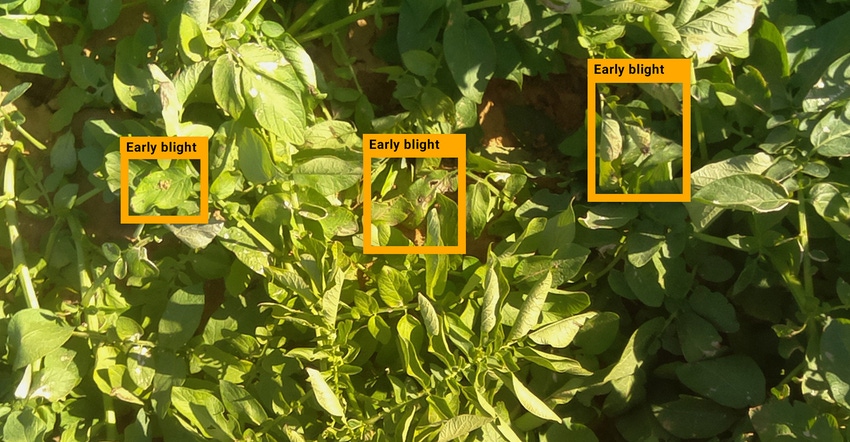June 6, 2019

The irrigation pivot is an interesting device. It sits in the field year-round and, when needed, goes to work bringing water to the crop. It’s also a delivery device for fertilizer and crop protection products, too. But Prospera Technologies Inc., a tech startup, has made news recently with its work to turn that pivot into something more — an automated information-gathering tool.
But what does that look like? And how will farmers maximize all the information those cameras and sensors gather? The answer is machine learning. Multiple images require someone, or something, to read them and interpret what’s being seen. In addition, the information must be readily available, not delayed, so quick action is possible.
“When our initial product launched, we looked at anomaly detection on aerial data,” says Daniel Koppel, CEO, Prospera. That work involved using aerial images and a multispectral imager to provide insights to growers. Yet Koppel says the company saw a greater opportunity with the pivot, so it reached out to the company, Valley.
He explains that Valley has a deep understanding of irrigation equipment and what could be found with more detailed imagery. “And they helped us figure things out,” he says, noting that initially there were issues with images and interpretation.
“We’re closer to the field, and we use a different imager from the pivot,” Koppel explains. “We added this layer with proximal sensing at the crop level by sensors mounted on the pivot. We could do more sophisticated analysis than with flybys with planes.”
Reading crop stress
Being closer to those anomalies meant having a better understanding of the stress levels in the crop. Add in the other information Valley could provide from 10,000 soil probes deployed across the country, and weather data and Prospera had a new approach to decision-making.
All those data — the on-pivot information, aerial imagery, soil probe information, soil type information and weather data — get combined into a proprietary machine learning system that can take that information and interpret what the crop is showing. The image with this story shows an actual image output that highlights potato blight areas in a field where the blight may not be readily visible.
“One piece of data is not enough,” Koppel says. “With different types of data, you get a better sense of the puzzle. As a company, multiple layers of data are digested. We’re not just saying, ‘Here’s a map and figure out what it means.’”
The key is the machine learning interpretation that can alert a farmer of a plugged or leaking nozzle, the early onset of disease, or the presence of some other profit-robbing pest. It’s still early for the Prospera-Valley partnership, and more work is being done to refine the artificial intelligence at work.
Maximizing imagery
Anyone trying to interpret crop imagery will comment on how changing light conditions can impact interpretation. It’s a challenge for those machine learning tools, too. Capture crop images in the morning, and the system may “see” things differently than it does in the afternoon. Or cloud cover can change light quality.
Koppel explains that researchers at Prospera have incorporated an interesting image capture tool to help with that problem. “We take images at night with a flash,” he says. “Lighting is the biggest issue with [crop images] and determining what the real light is. Using flash, we control the exposure and can calibrate our sensors with that approach.”
Innovation comes in many forms. For Prospera the next step is proving that its machine learning tools provide valuable information and actionable alerts for farmers and crop scouts. The pricing model for the service is yet to be determined, though Koppel says it would be sub-dollar per acre once sensors are installed. New Valley pivots may someday come with Prospera sensor tech as a standard feature. Retrofitting older pivots is pretty straightforward, too, he says.
Turning an irrigation pivot into a data-gathering tool is an innovation for those farms. Koppel says the aim is to “try to make this as easy as possible for the farmer.” Learn more at prospera.ag.
About the Author(s)
You May Also Like






